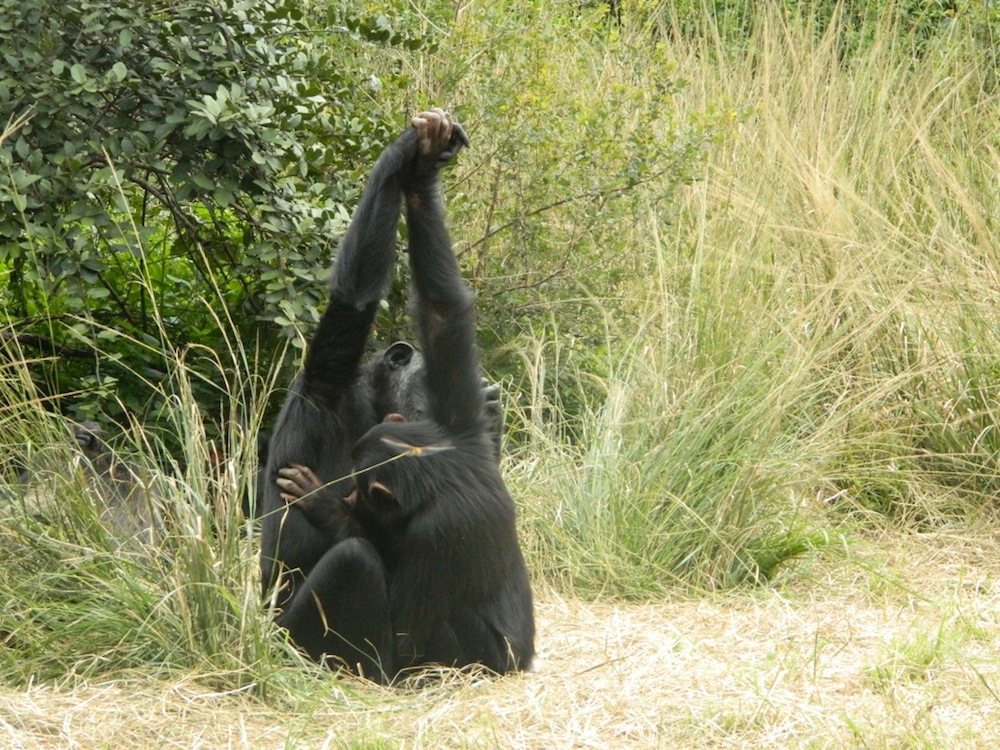When you buy through links on our web site , we may earn an affiliate deputation . Here ’s how it work out .
Our lineage might have diverged from our rascal relative later than antecedently thought , a new archpriest fossil from Saudi Arabia now suggests .
One central step in understandinghuman evolutionis immobilize doing when the hominoid lineage , which includes imitator and humans , diverged from the Old World monkeys .

Scientists discovered the partial skull (cranium shown here) of a new primate species, Saadanius hijazensis, in Saudi Arabia. The specimen was found with the palate and teeth facing upward, embedded in an iron-rich clastic conglomerate in the middle part of the Shumaysi Formation.
" If we can refine our understanding of the date of schism between hominoids and Old World scallywag and eventually get a good idea of what was encounter with the ecology , climate and penning of co - occur mammals at that clock time , we will get a line about the conditions drive our own ultimate origin , " researcher William Sanders , a paleontologist at the University of Michigan at Ann Arbor , assure LiveScience .
transmitted analysis of world , monkeys and other high priest had placed the rip at roughly 35 million to 30 million years ago , during the former Oligocene full stop . However , the fossil phonograph recording from the mid - to - late Oligocene , some 30 million to 23 million years ago , had antecedently render little evidence stand the timing of the divergence .
hierarch skull

Now researchers have revealed a partial skull around 29 million to 28 million eld sure-enough of a previously strange species of average - sized prelate that might have come on the scene just before our lineage break out from Old World rapscallion .
When active the primate in all likelihood resembled a New World imp ( a group that includes marmosets , tamarins , ringtail and other imp ) , skylark a posterior and moving on all fours .
" It ’s not a scallywag , it ’s not an ape — it ’s this intermediate , a precursor fossil for all imitator and Old World scamp , " say research worker Iyad Zalmout , a paleontologist at the University of Michigan at Ann Arbor .

The fossil , unearthed in 2009 near the west coast of Saudi Arabia during a joint theater of operations expedition of the Saudi Geological Survey and University of Michigan , is dubbedSaadanius hijazensis . In Arabic , " saadan " collectively refers to ape and monkeys , while " Al Hijaz " concern to the region where the fossil was found .
The fossil had grounds of mysterious bite marks and perchance fateful puncture wound on it . Back then , the area was a lovesome , riotous woodland very unlike most of present - sidereal day Saudi Arabia , and was populated by extinct mammals recognize as creodonts , carnivores generally more heavily built than living cats and canine that possessed large fang subject of inflicting the damage seen in the newfangled fogy skull . [ Evolution ’s Most Extreme Mammals ]
share features

The fossil , which scientist said belonged to an adult male person weighing about 33 to 44 pound ( 15 to 20 kilograms ) , possessed feature of the catarrhine , thecommon ancestor of hominoidsand Old World monkeys , such as a tubular ectotympanic , a bone linked with the eardrum . These unexampled determination suggest the divergency between hominoids and Old World monkeys materialise between 29 and 24 million years ago .
" Between 24 million and 29 million age ago , there ’s the beginning of the airing of the Red Sea , and changes in temperature and sea level and climate , and novel animals amount in from Europe and novel vegetation from South Asia , " Sanders said . " Now we can start take care at all these factors to better understand the evolutionary testing ground that drove the issue of groups like our own . "
Future inquiry will focus on trying to find more ofSaadanius , specially the eternal sleep of the skeleton besides its skull .

" We ’d wish to know more about how it negotiated around the landscape painting , " Sanders suppose .
The scientist detail their findings in the July 15 issue of Nature .













